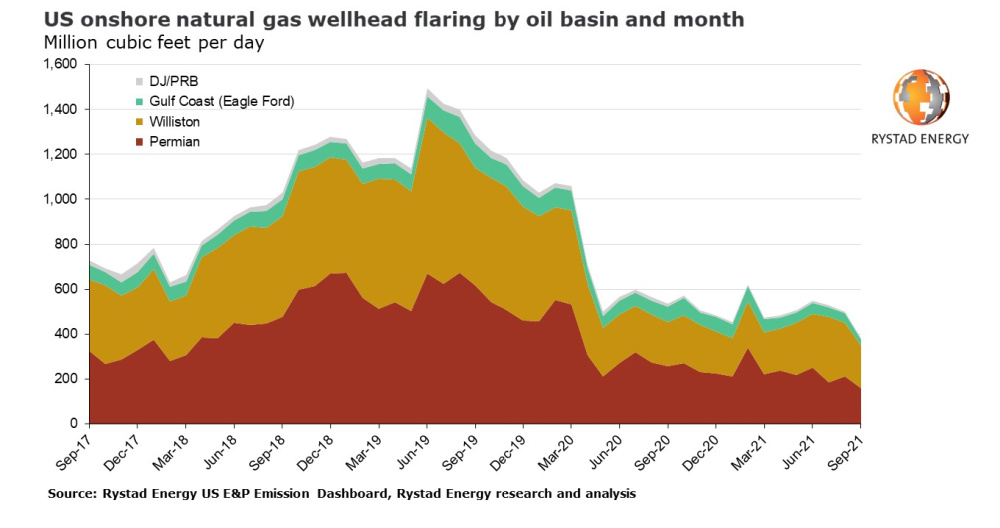Gas flaring hit a record low in the U.S. last fall—a trend that Artem Abramov, head of shale research for Rystad Energy, expects will continue.
“Based on what we hear from some E&P companies when we talk to them, I have a high degree of confidence that gas flaring will continue to decline in the next two to three years,” Abramov told Hart Energy in an exclusive interview.
Abramov recently authored a report for Rystad Energy on the decline in onshore gas flaring in the U.S., which plummeted in the third quarter to its lowest level since at least 2012. The nosedive was led by improved flaring practices in the Permian Basin and Bakken through a combination of improved takeaway capacities, investor expectations and COVID-related impacts, according to the Rystad report.

“All large independent producers, they now have quite tangible targets,” Abramov added. “They plan to eliminate routine flaring completely, at latest by 2025 and in exceptional cases by 2030. Right now, many of them are not there yet so there is still some room for improvement.”
Jump to Topic:
- 0:32 - Overview of report’s findings
- 2:40 - What has led to decreases in flaring
- 5:41 - Expected trends in flaring
- 7:13 - Challenges to continued flaring decreases
- 9:36 - Small operator best practices
- 12:18 - Bakken flaring challenges
- 15:36 - Flaring trends over the next year
Recommended Reading
Optimizing Direct Air Capture Similar to Recovering Spilled Wine
2024-09-20 - Direct air capture technologies are technically and financially challenging, but efforts are underway to change that.
Offshore Guyana: ‘The Place to Spend Money’
2024-07-09 - Exxon Mobil, Hess and CNOOC are prepared to pump as much as $105 billion into the vast potential of the Stabroek Block.
Endeavor Energy Founder Autry Stephens Dies at 86
2024-08-16 - Stephens created a legacy in the Permian Basin that Endeavor said will continue to shape the future of the company.
Superior Sees Executive Leadership Changes
2024-08-15 - Superior Energy Services’ president, CEO and chairman Brian Moore is retiring, and his roles are to be split between the two people succeeding him.
CEO: Baker Hughes Lands $3.5B in New Contracts in ‘Age of Gas’
2024-07-26 - Baker Hughes revised down its global upstream spending outlook for the year due to “North American softness” with oil activity recovery in second half unlikely to materialize, President and CEO Lorenzo Simonelli said.
Comments
Add new comment
This conversation is moderated according to Hart Energy community rules. Please read the rules before joining the discussion. If you’re experiencing any technical problems, please contact our customer care team.





